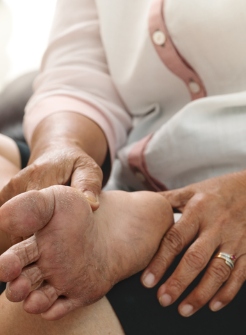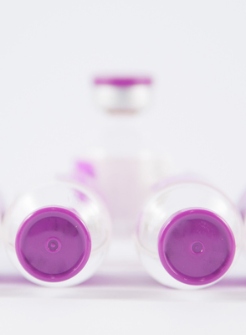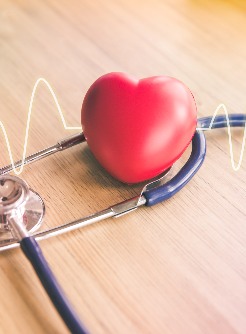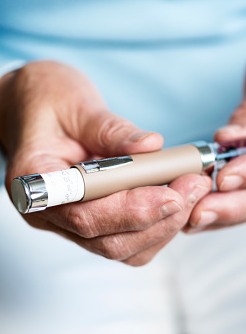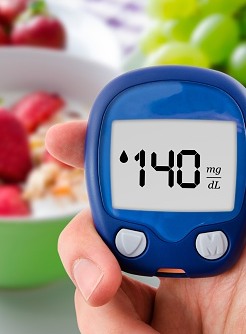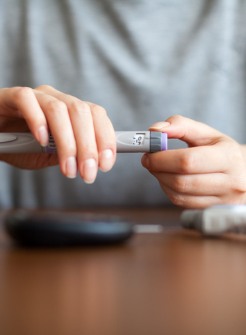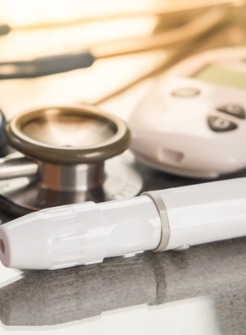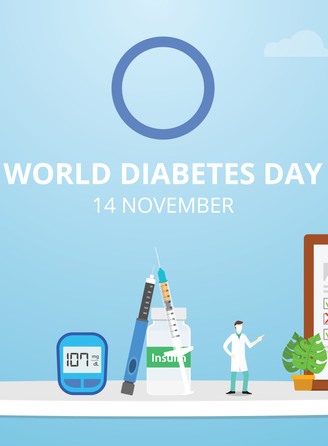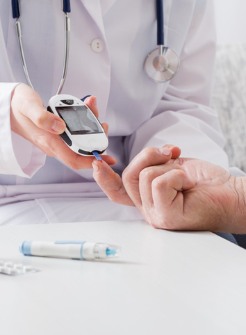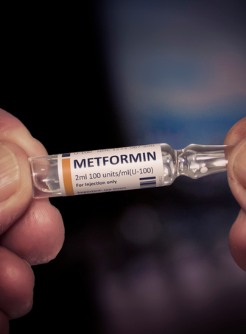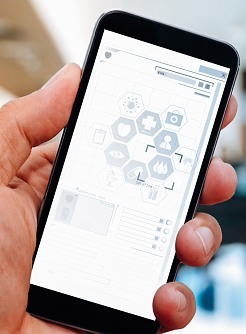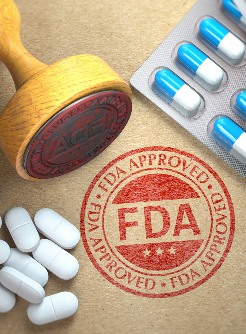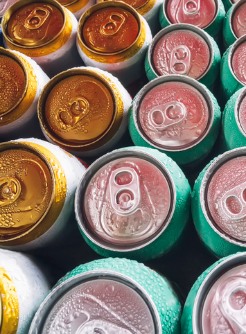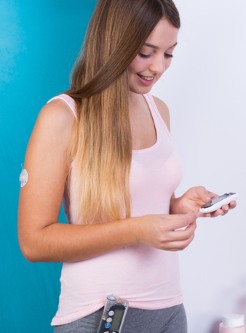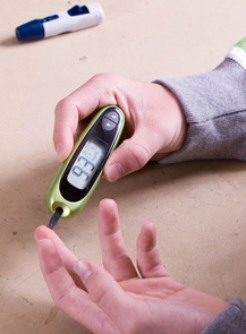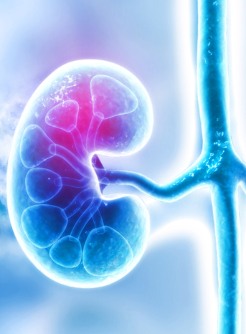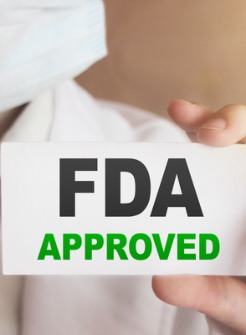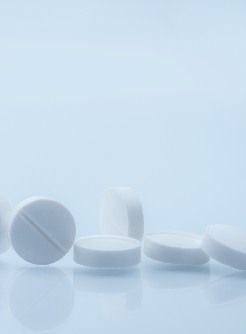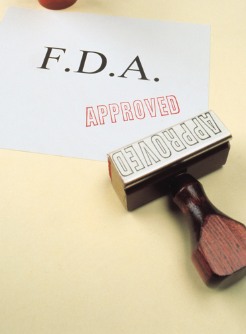Once a Week Proves as Effective as Once a Day Insulin Injections
By Annette M. Boyle, /alert Contributor
November 24, 2020
Despite the many benefits of insulin therapy for patients with poorly controlled type 2 diabetics and recommendations to escalate treatment, many patients resist any medication that requires daily or more frequent injections. A new formulation of insulin may increase their willingness—and improve their outcomes.
Once-weekly insulin icodec, a basal insulin analog, achieved similar reductions in HbA1c as once-daily insulin glargine U100 with no significant increase in adverse events in a phase 2 trial published in the New England Journal of Medicine and presented at the virtual European Association for the Study of Diabetes 2020 meeting. Insulin glargine is currently the most commonly prescribed basal insulin analog in the U.S.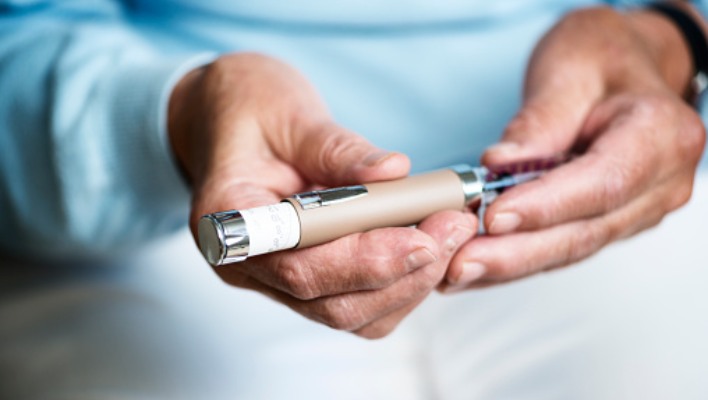
Given the robustness of the efficacy and safety findings, the investigators suggested that insulin icodec could be expected to increase patient satisfaction and adherence as seen when switching other diabetes drugs from other once daily to once weekly. “The smaller number of injections associated with once-weekly icodec than with once-daily basal insulin may facilitate treatment initiation in patients with type 2 diabetes who have not previously taken insulin, by reducing clinical inertia and promoting better acceptance of insulin therapy,” they wrote.
At the end of the study, HbA1c dropped 1.33% for those taking insulin icodec while those taking insulin glargine saw a decline of 1.15%. Twenty-six weeks after initiation, the estimated mean HbA1c in the weekly injection group was 6.69%. Those taking once daily insulin had an estimated mean HbA1c of 6.87% at that point.
Overall, 72% of the insulin icodec group achieved an HbA1c below 7% compared to 68% of the insulin glargine group. Nearly half (49%) of those on weekly injections reached a target level below 6.5%. Just 39% of those on daily injections achieved an HbA1c below 6.5%. The mean patient-measured blood glucose level was lower throughout the entire study in the insulin icodec group.
Patients taking insulin icodec also had a lower mean weekly insulin dose and a greater proportion of time within glycemic range of 70 to 140 mg per deciliter in the last two weeks of treatment, averaging about 78 more minutes per day. The researchers noted that “the most recent consensus paper on time spent in the glycemic range of 70 to 180 mg per deciliter states that each 5% incremental increase in that measure is associated with clinically significant benefits.” The insulin icodec participants also had better post-breakfast and post-lunch measurements.
The international 26-week, randomized, double-blind, double-dummy study included 247 insulin-naïve adults with type 2 diabetes who had HbA1c between 7% and 9.5%. All participants were on metformin with or without a DPP-4 inhibitor. The insulin icodec group had 125 participants after randomization. The insulin glargine group had 122 participants.
No serious adverse events were considered possibly or probably related to the trial medications, according to the investigators.
Both groups had low rates of level 2 or 3 hypoglycemia. The insulin icodec group had 0.53 level 2 or level 3 hypoglycemic events per patient-year for an observed incidence of 16.0%. In the insulin glargine group, the rate of level 2 or level 3 hypoglycemia was 0.46 per patient-year or an observed incidence of 9.8%. The difference between the two was not statistically significant (estimated rate ratio, 1.09; 95% CI, 0.45 to 2.65).
Level 1 hypoglycemia alerts occurred in 53.6% of the icodec group and 37.7% of the glargine group. The higher rates of level 1 hypoglycemia “suggests that the fasting glucose target may need to be slightly higher and the insulin dose increments smaller to ensure an efficacious initiation and adjustment of insulin icodec with even fewer hypoglycemic events.”
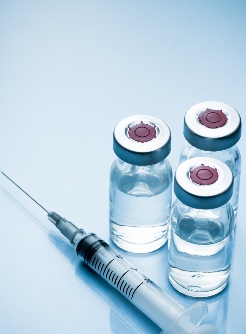
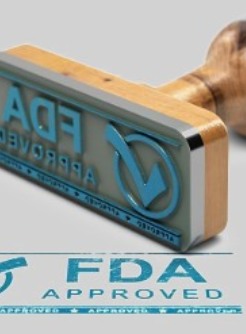
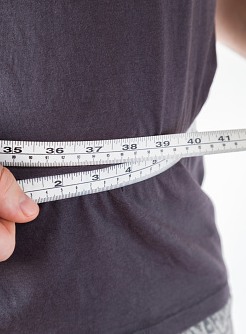
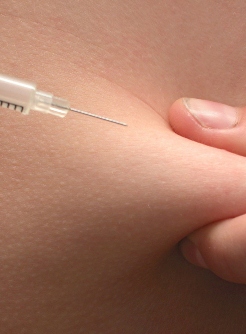
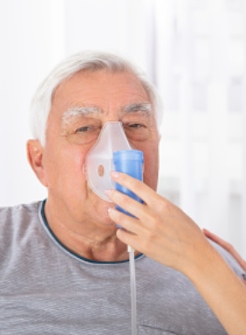
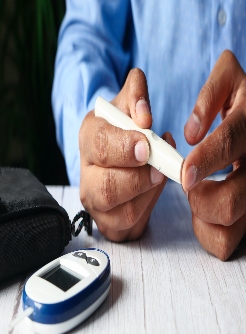
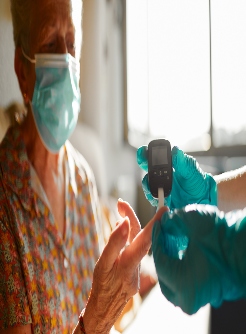
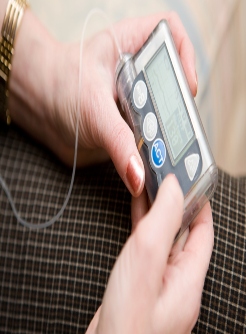

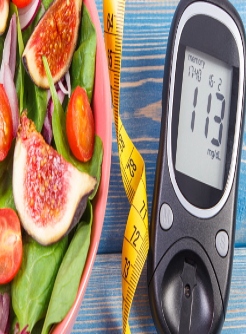

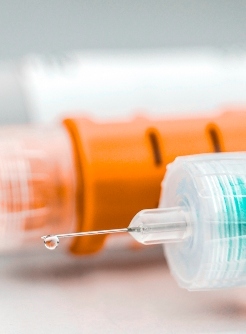
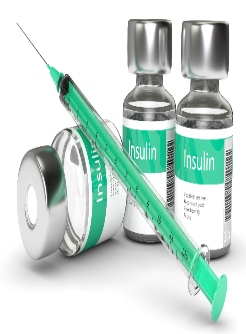

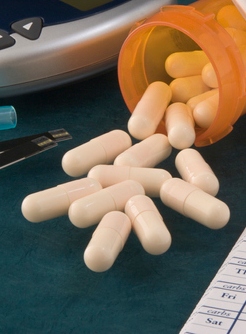
.jpg)

